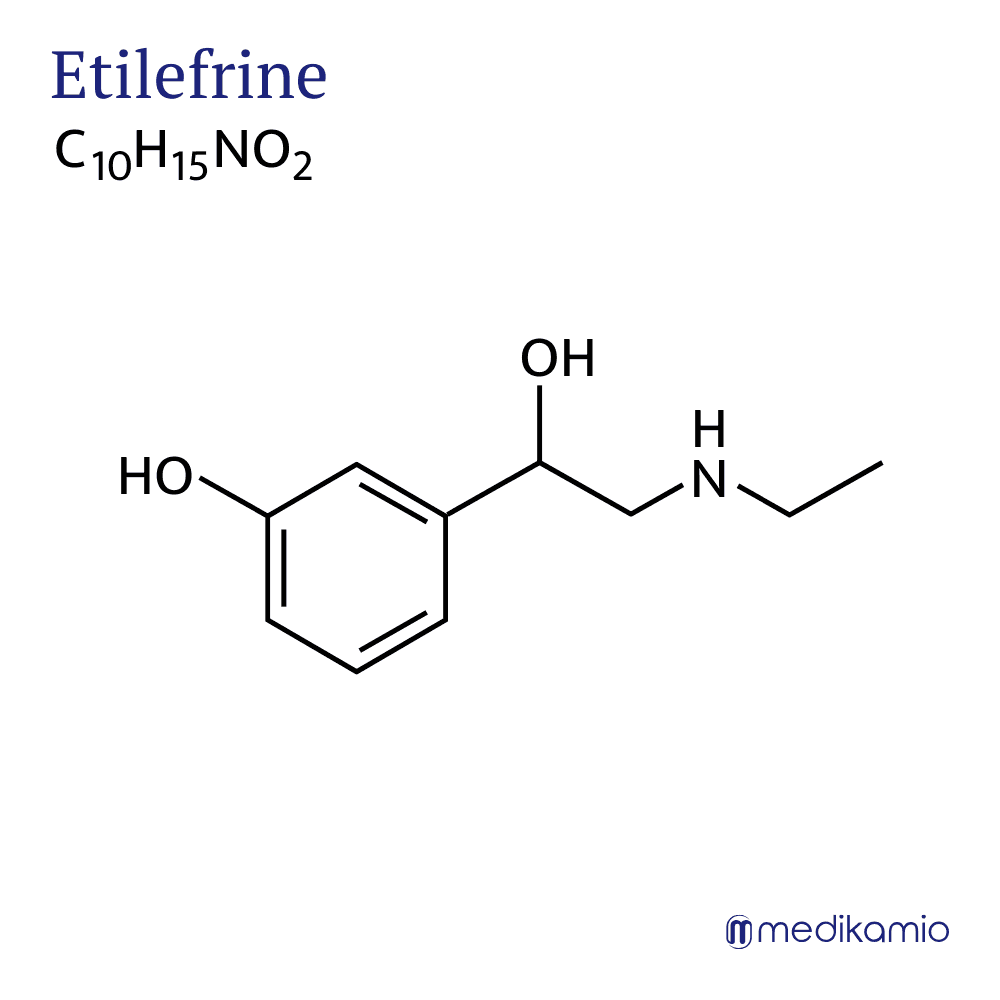Basics
Etilefrin is an active ingredient that is used to treat low blood pressure. It belongs to the group of sympathomimetics and is structurally related to adrenaline. It is present in medicines in the form of etilefrin hydrochloride and is a white crystalline powder. Etilefrin is soluble in water.
Etilefrin is a racemate. A racemate is an active substance that consists of 2 molecules that occur in a 1:1 ratio and behave like image and mirror image. One speaks of the R-(dextrorotatory) enantiomer and S-(levorotatory) enantiomer. Enantiomers do NOT differ in their physical properties such as melting or boiling point. However, they can have the opposite effect. For example, (S)-carvone smells like caraway and (R)-carvone smells like mint. The amino acid (S)-valine tastes bitter, while (R)-valine tastes sweet. For these reasons, both enantiomers are always tested in today's approval procedures for new active ingredients. Sometimes one enantiomer can be converted into the other in the body.

